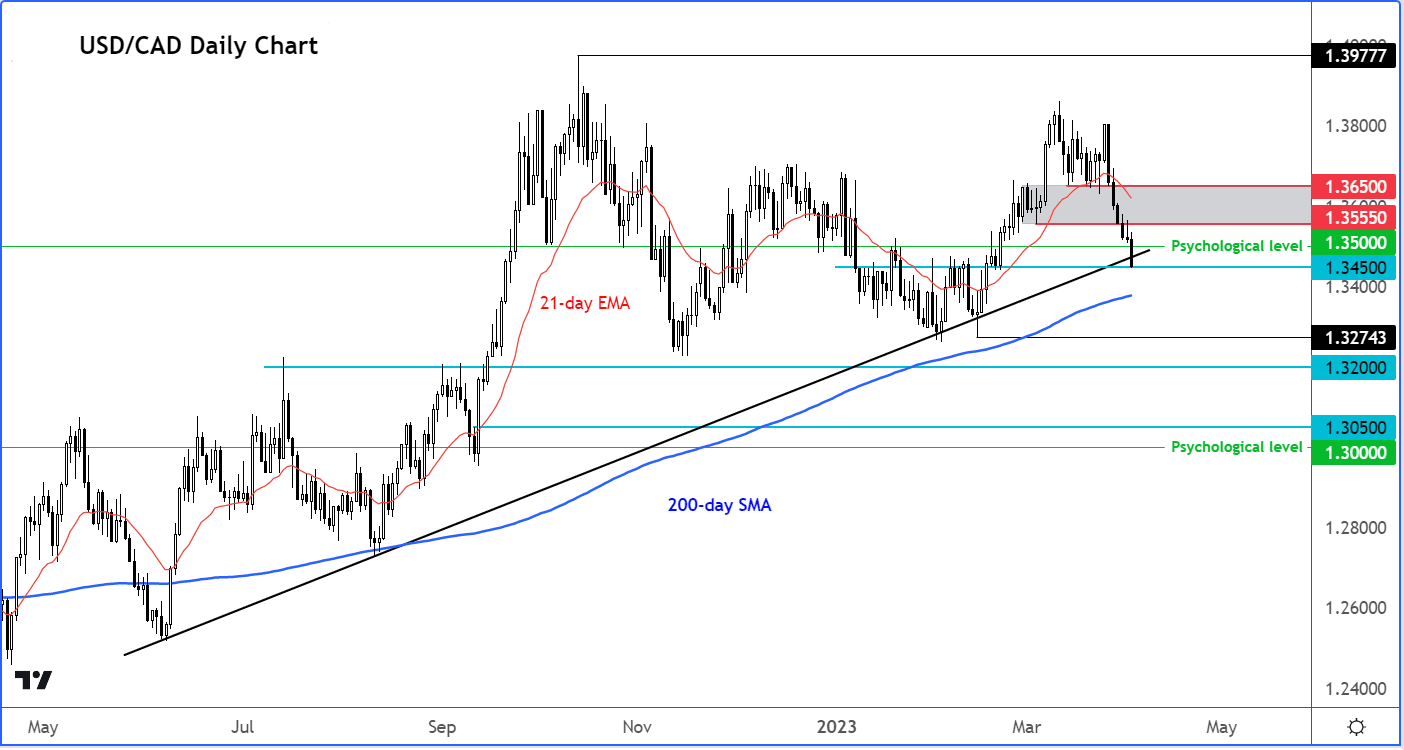Canadian Dollar Outlook Bolstered by Oil price Surge: City Index
- Written by: Fawad Razaqzada, Analyst at City Index
-

Image © Adobe Stock
The Canadian dollar got a boost as oil prices jumped some 8% or so at the Asian open after the OPEC+ blindsided the market with a surprise production cut, announced at the weekend.
The group agreed to cut nearly 1.7 million barrels of oil per day.
The reductions are pledged from next month through year-end. Saudi Arabia is again leading the way with 500,000 barrels per day of cuts.
Several other gulf states have joined in with their curbs. Russia, who had already announced a 500k bpd through June, has now extended that through year-end.
Given that nearly 1.7 million barrels of oil per day will be held back from the global supply, this should keep prices supported.
The OPEC+ decision was totally unexpected. While the cuts are expected to tighten the oil market, a side effect will be a fresh inflationary jolt to the world economy.
This may mean even more rate increases than was priced last week.
Anyway, if oil prices continue to print bullish price action, the CAD should be supported.
The USD/CAD outlook's technical picture remains bearish and points to lower levels.
The USD/CAD is on the verge of breaking below its bullish trend line after some key support levels including 1.3500 gave way.
A clean break below the trend line would bring the 200-day average into focus, at 1.3377, followed by the February low at 1.3266.
Even if we see a bit of data-related bounce later in the week, the path of least resistance would remain to the downside for as long as key resistance in the shaded region on the chart, around 13550 to 1.3650, remains intact.
The greenback has been on the backfoot in recent weeks, thanks largely to an improving risk appetite across the financial markets and the Fed strongly suggesting that rate increases will be paused.
The Fed’s favourite inflation gauge, the core PCE Price Index, came in weaker-than-expected on Friday of last week and we have just seen the ISM manufacturing PMI come in at 46.3 vs 47.7 last and expected.
The detail of the ISM report showed new orders falling to 44.3 from 47.0 last, while employment in the sector fell to 46.9 from 49.1.
Read: Oil Production Cut Reflects OPEC Weakness say Economists
The ISM manufacturing PMI data has highlighted recession risks facing the US economy, especially if we now see higher oil prices.
The data applied fresh pressure on the US dollar and caused the USD/JPY and USD/CAD to fall to fresh session lows, while gold and silver gained ground.
It is going to be a busy week for the US and Canadian dollars, with lots of data releases to come. JOLTS Job Openings will be among the US data highlights on Tuesday, followed by the ADP private payrolls and ISM services PMI on Wednesday.
The latest US and Canadian employment reports will be released towards the end of the week. The USD/CAD outlook will be impacted by these data releases.
While Friday is going to be a bank holiday for most of Europe and Canada, we will have the US non-farm payrolls report released that day, which could mean higher-than-usual volatility due to lower trading volumes. Below are the week’s key highlights.
The NFP will probably be the most important macro-pointer for the wider markets.
Investors have been repricing lower the Fed’s projected interest rate path in recent weeks, causing a significant downward move in the dollar.
The market will continually question whether this is the right approach.
So, a lot of attention will be on the employment and wages aspect of the NFP data, as investors figure out whether more rate hikes will follow, or the Fed will hit the pause.












